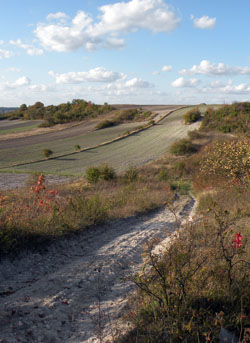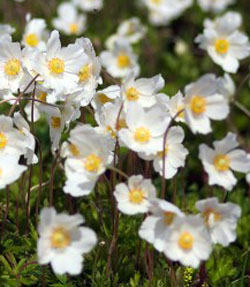
|
NIEDZIELISKA (PLH060044)
The Niedzieliska site PLH060044 of 7.39 ha was established to protect assemblages of xerothermic vegetation growing on two hummocks surrounded by agricultural fields. It is located in the vicinity of the Wieprz River valley, about 2 km south of the buildings of Niedzieliska village. This site is located in the Zamojski Padół meso-region of the Lublin Upland. In terms of its administration, the site is in Zamojski County and the Szczebrzeszyn Township. A natural monument of xerothermic vegetation of about 0.16 ha, known as Dziewcza Góra hill (272 m a.s.l.), was established on the top of one of the rises in 1992. It was not until the beginning of the 21st century that this site of shrubs and grasslands and the sunny slopes of the neighboring, nameless hill were carefully studied, revealing their high natural qualities. This area has also been incorporated into the boundary of the Niedzieliska sanctuary.
Among the habitats found here under special legal protection in the European Union, the most valuable are the assemblages of xerothermic grasslands and the Juniperus communis shrubs growing on the xerothermic grasslands. Twelve species of protected plants occur here. Anemone sylvestris is one often found in these grasslands. Other protected plant species found here include: Prunus fruticosa, Aster amellus, Gentiana cruciata and Rosa gallica - listed in the Polish Red Data Book of Plants.
In the 1990s, a shrinking colony of Spermophilus suslicus was observed in the immediate vicinity among the fields. Aside from these observations, the site's fauna is poorly known. The protected butterfly - Papilio machaon - is often seen here.
Most of the site was formerly used for farming or to excavate lime. After this was abandoned due to the low fertility of the rocky rendzina soils, grassland and shrub assemblages developed. Currently, species of juniperus, prunus and liguster dominate, among others, and in some places grow too densely for light-demanding plant species to develop. Also, trash is illegally dumped in the thick scrub, while grassland fragments deemed useless for agricultural purposes are planted with trees. As part of "Conservation and restoration of xerothermic grasslands in Poland - theory and practice" project, the densest stands of shrubs will be thinned where protected plant species occur and the trash dumps will be eliminated.
     
|

|


|







